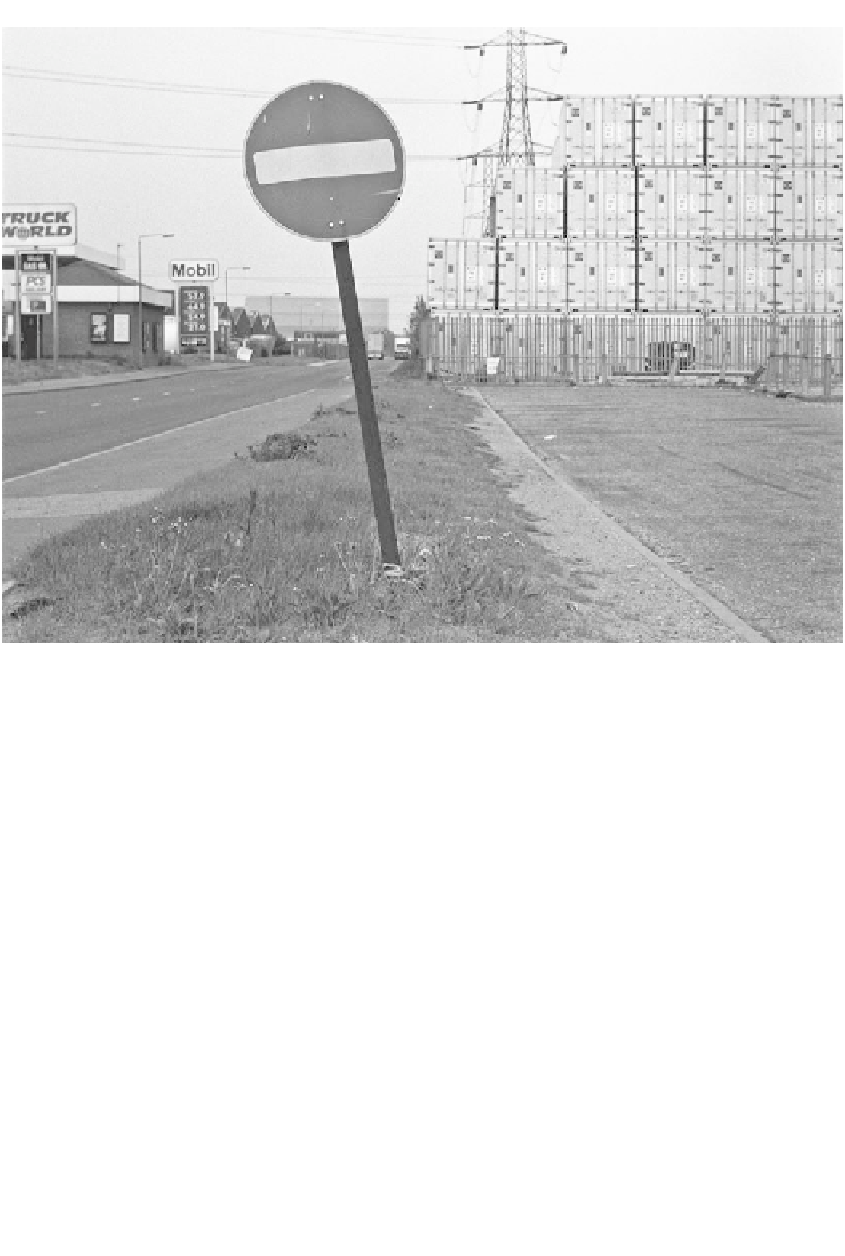Environmental Engineering Reference
In-Depth Information
Figure 3.25
Robinson in Space
, 1996, directed by Patrick Keiller. Robinson is commissioned by 'a well-
known international advertising agency' to undertake a study of the 'problem' of England, which
is never sufficiently defined, but seems all too clear.
John Robinson
: There's a lot of space out there to get lost in.
Source
: British Film Institute Stills Collection.
might happen if the national approach to transport was pursued in London - a fairly limited
reduction in emissions, if anything at all.
As well as concerns regarding the narrow aspect of policy under this potential scenario,
there are major risks in the assumed level of 'success' in policy implementation for the key
measures employed. The central assumption of a 100 gCO2/km average total car fleet by 2025
is very ambitious based on the current trajectory. Most of the gains in fuel efficiency are likely
to be offset by consumer preference for larger and heavier cars, and perhaps longer travel
distances over time. A more realistic assumption would be a lower level application of techno-
logical change (assuming a 125 gCO2/km average total car fleet and 4 per cent alternative
fuels, mainly in the freight and bus fleets, by 2025). The difficulty here is that this leads only
to a contribution reduction in transport CO2 emissions of around 6 per cent. Clearly the
assumptions embedded within scenarios, and more importantly achieved, are critical to the
end level of transport CO2 emissions.
The scenario analysis illustrates the different potential for vehicle technology to achieve
CO2 reduction targets in London if pushed hard (through regulation) or left to the voluntary
actions of motor manufacturers and individual choice. Importantly, there is still a substantial
shortfall against the headline target if the higher levels of application are achieved.

